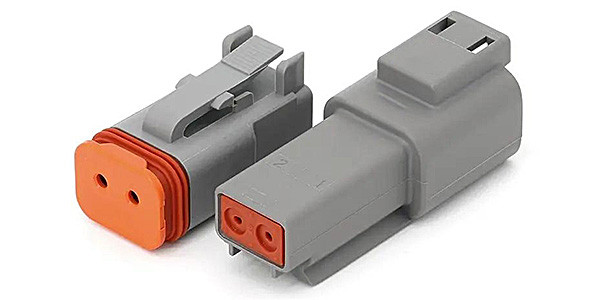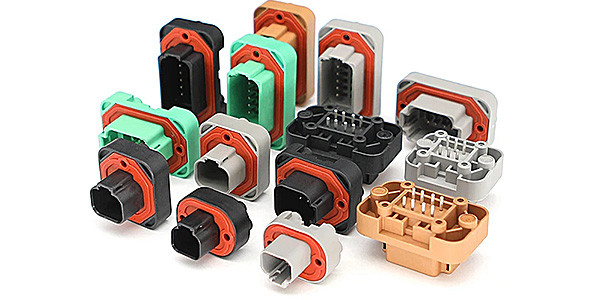Automotive Waterproof Connectors: Engineering Excellence for Modern Mobility Introduction

The automotive industry is undergoing a technological revolution, driven by electrification, autonomous driving, and connectivity. At the core of these advancements lies the vehicle’s electrical architecture, which demands components capable of withstanding extreme environments. Automotive waterproof connectors are unsung heroes in this ecosystem, ensuring uninterrupted power and data transmission even in the harshest conditions.
Table of Contents
ToggleThe Evolution of Automotive Electrical Systems
From Mechanical to Electrical Dominance
The shift from mechanical to electronic control systems in vehicles.
Role of ECUs (Engine Control Units), sensors, and CAN (Controller Area Network) buses.
Electrification and the Rise of EVs
How electric vehicles (EVs) and hybrids rely on high-voltage systems.
The growing need for robust connectors in battery management systems (BMS) and charging infrastructure.
ADAS and Autonomous Driving
The surge in sensors (LiDAR, radar, cameras) and computing power.
Why waterproofing is critical for safety-critical systems like collision avoidance.
Understanding Automotive Waterproof Connectors
Definition and Core Functions
What makes a connector “waterproof”?
Protection against moisture, dust, chemicals, and vibration.
Key Components
Housing Materials: Thermoplastics (PBT, nylon), metals (aluminum alloys).
Seals: Silicone gaskets, O-rings, overmolded designs.
Terminals: Gold plating for corrosion resistance, crimping vs. soldering.
IP Ratings Decoded
IP67 vs. IP68 vs. IP69K: Understanding immersion depth and pressure resistance.
Relevance of standards like ISO 20653 (road vehicles) and MIL-STD-810 (military-grade).
Design and Manufacturing Technologies
Sealing Mechanisms
Radial Seals: Compression-based designs for circular connectors.
Potting and Encapsulation: Using epoxy resins to protect sensitive electronics.
Overmolding: Integrating seals during injection molding for seamless protection.
Material Science Innovations
High-temperature thermoplastics (e.g., PPS, PEEK) for under-hood applications.
Silicone vs. fluorocarbon elastomers: Balancing flexibility and chemical resistance.
Advanced Manufacturing Processes
Precision stamping for terminals.
Automated testing for seal integrity (pressure decay tests).
Types of Automotive Waterproof Connectors
By Application
Powertrain: High-voltage connectors for EVs (e.g., Tesla’s battery pack connectors).
Lighting: Sealed connectors for LED headlights and taillights.
ADAS: Miniaturized connectors for cameras and LiDAR modules.
By Connector Style
Circular Connectors: Deutsch, TE Connectivity’s DEUTSCH DT series.
Rectangular Connectors: Molex MX150, ideal for tight spaces.
FPC/FFC Connectors: Flexible printed circuits for infotainment systems.
Hybrid Connectors
Combining power, signal, and data lines in a single housing (e.g., Ethernet over coax).
Applications Across Vehicle Systems
Internal Combustion Engine (ICE) Vehicles
Engine control modules, fuel injectors, and transmission systems.
Challenges of oil, heat, and vibration in under-hood environments.

Electric and Hybrid Vehicles
Battery packs: Managing 400V–800V systems with IP68-rated connectors.
Charging ports: AC/DC charging inlets requiring durability and safety.
Autonomous and Connected Vehicles
V2X (Vehicle-to-Everything) communication: Ensuring signal integrity in rain/snow.
Sensor fusion: Waterproofing radar and camera housings.
Commercial and Off-Road Vehicles
Heavy-duty connectors for construction equipment and agricultural machinery.
Resistance to mud, pressure washing, and extreme temperatures.
Chapter 6: Benefits of Waterproof Connectors
Enhanced Reliability
Preventing corrosion-induced failures in coastal or humid regions.
Case study: Reduction in warranty claims for a major OEM after switching to IP67 connectors.
Safety Compliance
Meeting ISO 26262 functional safety standards for ADAS.
Preventing short circuits in high-voltage EV systems.
Cost Efficiency
Lower maintenance costs and extended vehicle lifespan.
Reduced recalls due to electrical faults.
Challenges in Design and Implementation
Material and Manufacturing Costs
Balancing performance with affordability in mass production.
Miniaturization vs. Durability
Designing compact connectors without compromising seal integrity (e.g., micro-connectors for ADAS).
Thermal Management
Dissipating heat in high-current applications (e.g., fast-charging EV ports).
Assembly Complexity
Training technicians to handle delicate seals during harness assembly.
Selecting the Right Connector
Key Selection Criteria
Environmental factors: Temperature range, UV exposure, chemical contact.
Electrical requirements: Current rating, voltage, shielding for EMI/RFI.
Industry Standards
USCAR-2 (performance), LV214 (high-voltage), and IEC 60529 (IP ratings).
Supplier Landscape
Profiles of leading manufacturers: TE Connectivity, Molex, Amphenol, Yazaki.
Case Studies
Tesla’s IP68 Battery Connectors
How waterproofing contributes to the longevity of Tesla’s battery packs.
Toyota’s Hybrid Synergy Drive
Sealed connectors in hybrid powertrains for reliability under thermal cycling.
Off-Road Mastery: Jeep Wrangler
Use of Deutsch connectors for water fording up to 30 inches.

Future Trends and Innovations
Smart Connectors
Embedded sensors for real-time monitoring of temperature, moisture, and wear.
Sustainable Materials
Bio-based polymers and recyclable seals to meet ESG goals.
High-Speed Data Transmission
Supporting 10 Gbps+ Ethernet for autonomous vehicle networks.
Wireless Charging Integration
Waterproofing inductive charging systems for EVs.
The Global Market Landscape
Market Size and Growth Projections
CAGR analysis (2023–2030) by region (Asia-Pacific leading due to EV adoption).
Regional Standards and Regulations
Differences between EU (ECE R100), North America (SAE), and China (GB/T).
Impact of Geopolitical Factors
Supply chain resilience post-COVID and semiconductor shortages.
Conclusion
Automotive waterproof connectors are pivotal to the reliability, safety, and performance of next-generation vehicles. As the industry marches toward electrification and autonomy, innovations in materials, smart technologies, and sustainability will redefine these components. Engineers and manufacturers must collaborate to overcome challenges like miniaturization and cost while adhering to stringent global standards. By prioritizing innovation and quality, the automotive sector can ensure that waterproof connectors continue to drive progress in an increasingly connected and electric world.
